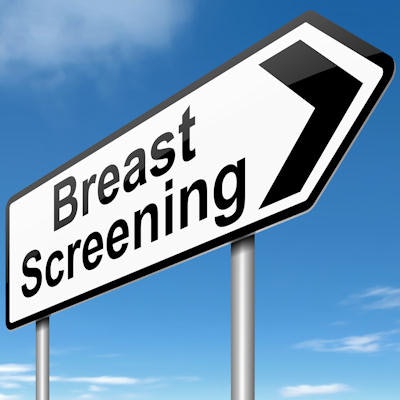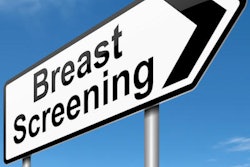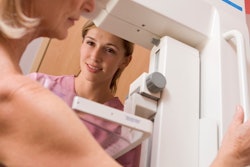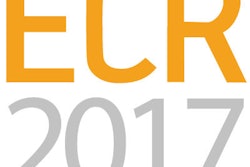
Screening breast MRI is a valuable tool in routine clinical practice across a spectrum of women at elevated risk for breast cancer -- not just those who meet the conventional definitions of high risk, according to a study published in the April issue of Academic Radiology.
The American College of Radiology's (ACR) BI-RADS Atlas (fifth edition) defines women at high risk as those with a known genetic predisposition to breast cancer (BRCA mutations), who have a lifetime risk for the disease of at least 20%, and who underwent radiation to the chest between the ages of 10 and 30.
But what about women who are at higher than average risk for other reasons, such as a personal history of breast cancer or a history of high-risk lesions? The study suggests that breast MRI is a good tool for them, too.
"To date, it has not been known whether the BI-RADS metrics would be applicable in routine practice in the United States outside of the research setting, and with a spectrum of patients at elevated risk," wrote a team led by Dr. Roberta Strigel of the University of Wisconsin in Madison. "Our clinical practice audit ... demonstrated that [a variety of performance metrics] all fell within the ACR BI-RADS MRI benchmarks, supporting their broader appropriateness for clinical practice in the United States."
Who can benefit?
In 2013, the ACR published the fifth edition of the atlas, which introduced screening benchmarks for breast MRI. The benchmarks were based on five clinical trials, conducted outside of the U.S., in women with a hereditary predisposition for breast cancer (Academic Radiology, April 2017, Vol. 24:4, pp. 411-417).
It's been unclear whether the outcomes of these clinical trials can be matched in routine clinical practice in the U.S. across a variety of patients, not just those at high risk, according to Strigel and colleagues. So they conducted an audit of screening breast MR outcomes to compare the results found when they used their own criteria to screen women with breast MRI to the results found when BI-RADS 5 was used to guide screening decisions.
The study used 860 exams performed in 566 patients at the University of Wisconsin between July 2010 and June 2013. Most of the exams were recommended because of a patient's family history of breast cancer (42.7%) or personal history with the disease (42.4%).
The researchers categorized the reasons why they ordered a screening breast MRI, such as gene mutations, personal or family history of breast cancer, history of chest radiation, and atypia/lobular carcinoma in situ. They then checked their outcomes against pathology results and/or 12 months or more of clinical or imaging follow-up, and calculated the abnormal interpretation rate, cancer detection rate, recommendation for biopsy (PPV2), biopsies performed (PPV3), median tumor size, and percentage of node-negative invasive cancers.
Strigel and colleagues found that their performance metrics were mostly comparable to the BI-RADS screening breast MRI benchmarks.
| Outcomes based on criteria for performing screening breast MRI | |||||
| Performance metric | BI-RADS 5 criteria | Strigel et al criteria | |||
| Cancer detection rate (per 1,000 exams) | 20-30 | 22.1 | |||
| Percentage of node-negative cancers | > 80% | 61.5% | |||
| Percentage of minimal cancer (invasive cancer ≤ 1 cm or ductal carcinoma in situ) | > 50% | 70.6% | |||
| PPV2 | 15% | 21.6% | |||
| PPV3 | 20%-50% | 23.8% | |||
The group found an abnormal interpretation rate (defined as the proportion of exams assigned BI-RADS categories 0, 3, 4, and 5) of 15.6%. There is no current BI-RADS benchmark for this measure, but the researchers calculated a proposed range of 6% to 17%, assuming a cancer detection rate of 20 to 30 cancers per 1,000 exams, a PPV3 rate of 20% to 50%, and allowing for up to 2% of exams to be designated BI-RADS 0 or 3. When they eliminated exams categorized as BI-RADS 3, the abnormal interpretation rate was even lower, at 10.6%.
"Although not a designated benchmark, BI-RADS states a desirable ... category 3 goal for MRI of 10%, decreasing over time in a mature program to a rate much closer to that currently achieved at mammography of 1% to 2%," the researchers wrote. "As radiologists become more experienced in the interpretation of MRI, the BI-RADS category 3 rate will likely decrease."
Missing the mark?
The study demonstrated that when the Strigel et al criteria were used to guide breast MRI screening, results for cancer detection, PPV2, and PPV3 all fell within the BI-RADS MRI benchmarks. But one of its metrics did miss the mark: The percentage of node-negative cancers detected with the Strigel criteria was lower than with BI-RADS 5. The authors hypothesized that this could have been because of the study's smaller sample size or its differing patient population compared to the clinical trials.
In addition, the researchers noted that one of the study's limitations is that its outcomes were from a single clinical practice with MRI interpretation by breast imaging radiologists, which may mean that its results wouldn't generalize to other practices.
However, overall, the study suggests that breast MRI can be used to screen a wider spectrum of women than just those covered by BI-RADS 5, the team wrote -- which only expands the screening arsenal.
"Our results met the ACR BI-RADS audit benchmarks for cancer detection rate, PPV2, and PPV3, supporting the adoption of these benchmarks in routine clinical practice," the authors concluded.




















